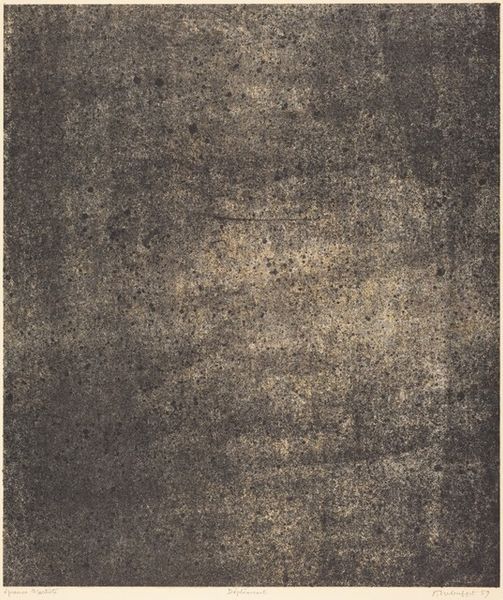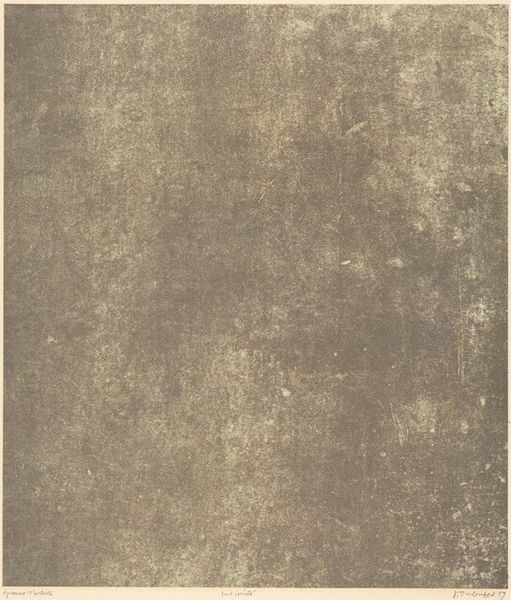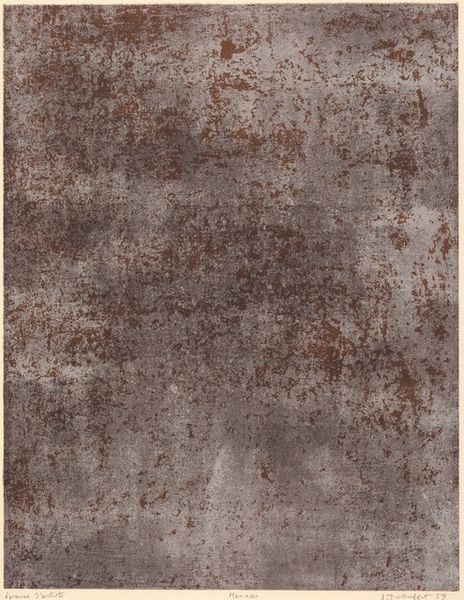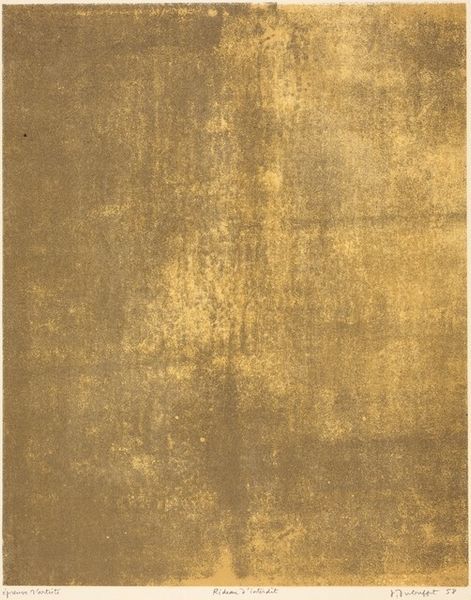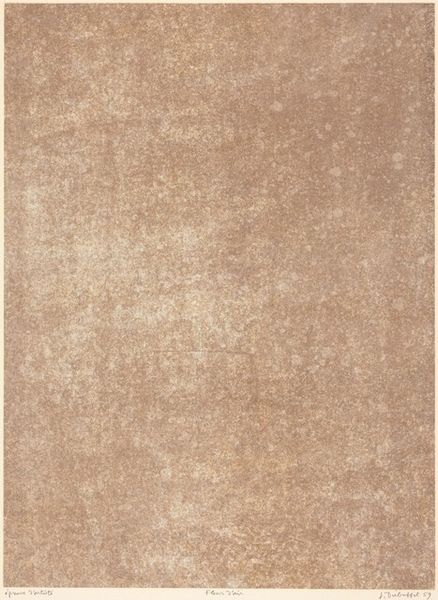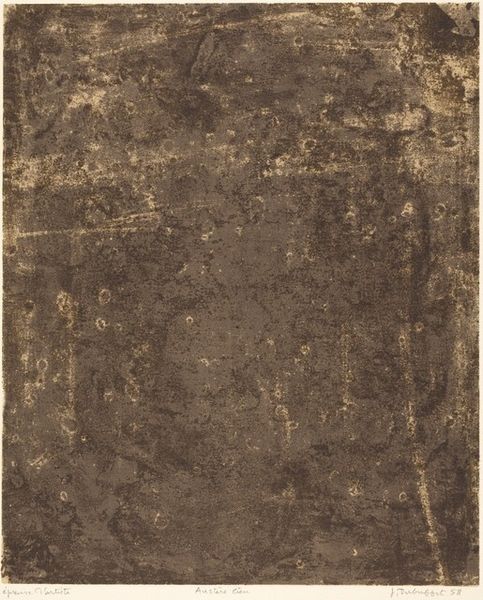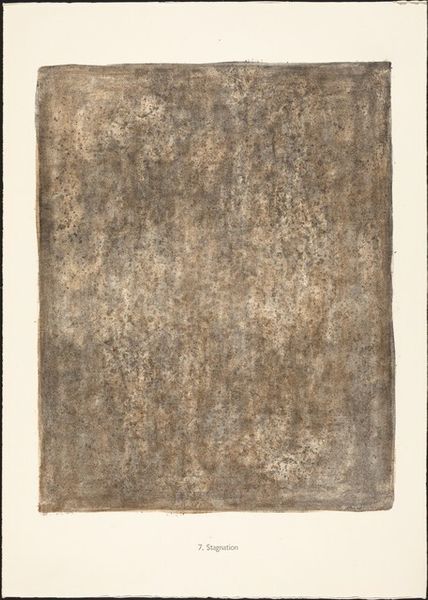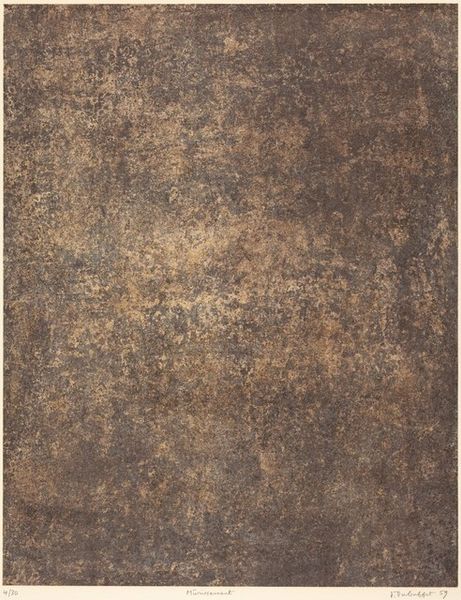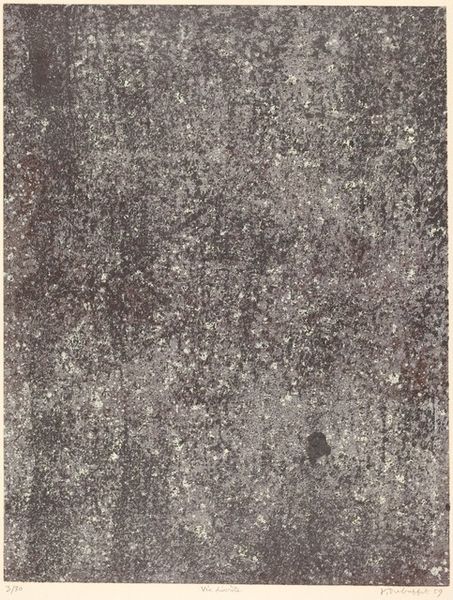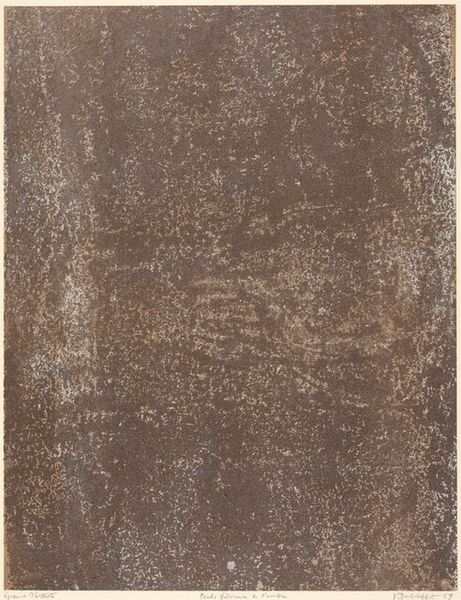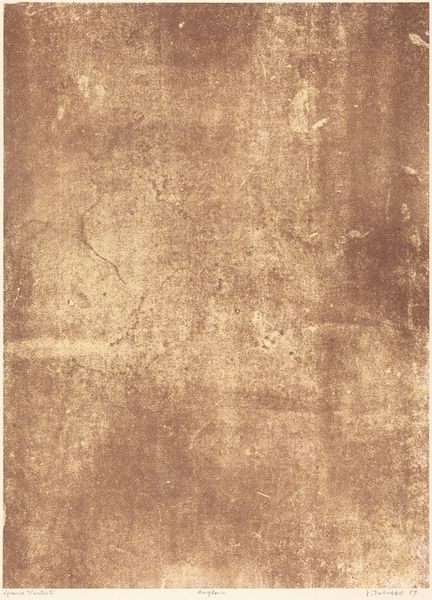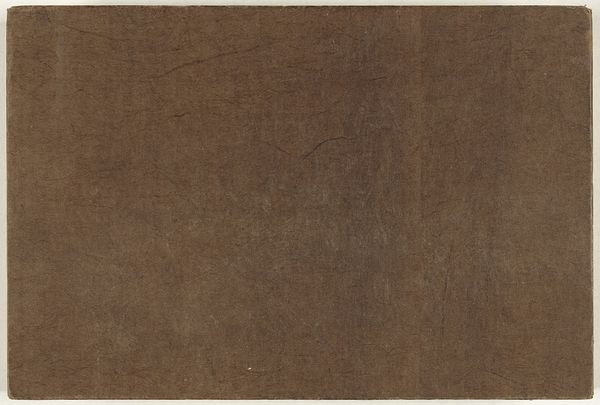
matter-painting, print
#
matter-painting
# print
#
art-informel
#
abstraction
Copyright: National Gallery of Art: CC0 1.0
Curator: Welcome. Today we will be discussing "L'attrait du vide," or "The Attraction of the Void," a matter painting and print created by Jean Dubuffet in 1959. Editor: Immediately, I'm struck by its subdued mood. The texture gives it such weight, almost a sense of desolation. It's very stark, not exactly what I’d expect when hearing "attraction.” Curator: Absolutely, Dubuffet often worked with unconventional materials and techniques, embracing the rough and unrefined, which is a feature of Art Informel. Look closely, the surface is dense with layers, creating a palpable texture and subtle granular details. Editor: Which, I think, aligns with Art Informel’s departure from established forms—a deliberate embrace of disorder and a kind of primal expression. We're in the shadow of the Algerian War here, after all. Could it be read as a metaphor for a fractured society? Curator: A plausible argument. Yet the composition offers another lens. The uniform distribution of the material, while seemingly chaotic, presents a field for the eye to wander. There are no focal points, allowing an experience, a meditative viewing process. Editor: But "void" isn’t only about the lack of something. The emptiness that you describe also holds the weight of colonial loss. Dubuffet worked through the devastation, using crude materials and expressionist approaches to address social disruptions happening on a local and international scale. This artwork could be an allegory for collective trauma. Curator: A compelling suggestion. The title complicates the purely formal reading; the “attraction” hints at a lure, a gravitational pull toward this seeming emptiness. Is the aesthetic experience, perhaps, one of facing an existential crisis? Editor: That is definitely possible, particularly given the artistic context of postwar reflection and sociopolitical tensions. As you stated, this is far from being a purely aesthetic gesture. Curator: Acknowledging Dubuffet’s technical process—a combination of unconventional printmaking with dense matter painting, opens questions on his wider artistic intentions during this period of experiment and reflection. Thank you for that observation. Editor: And thank you, that deep analysis allows us to think further about art’s possibilities as an important way to speak through and within disruption.
Comments
No comments
Be the first to comment and join the conversation on the ultimate creative platform.
